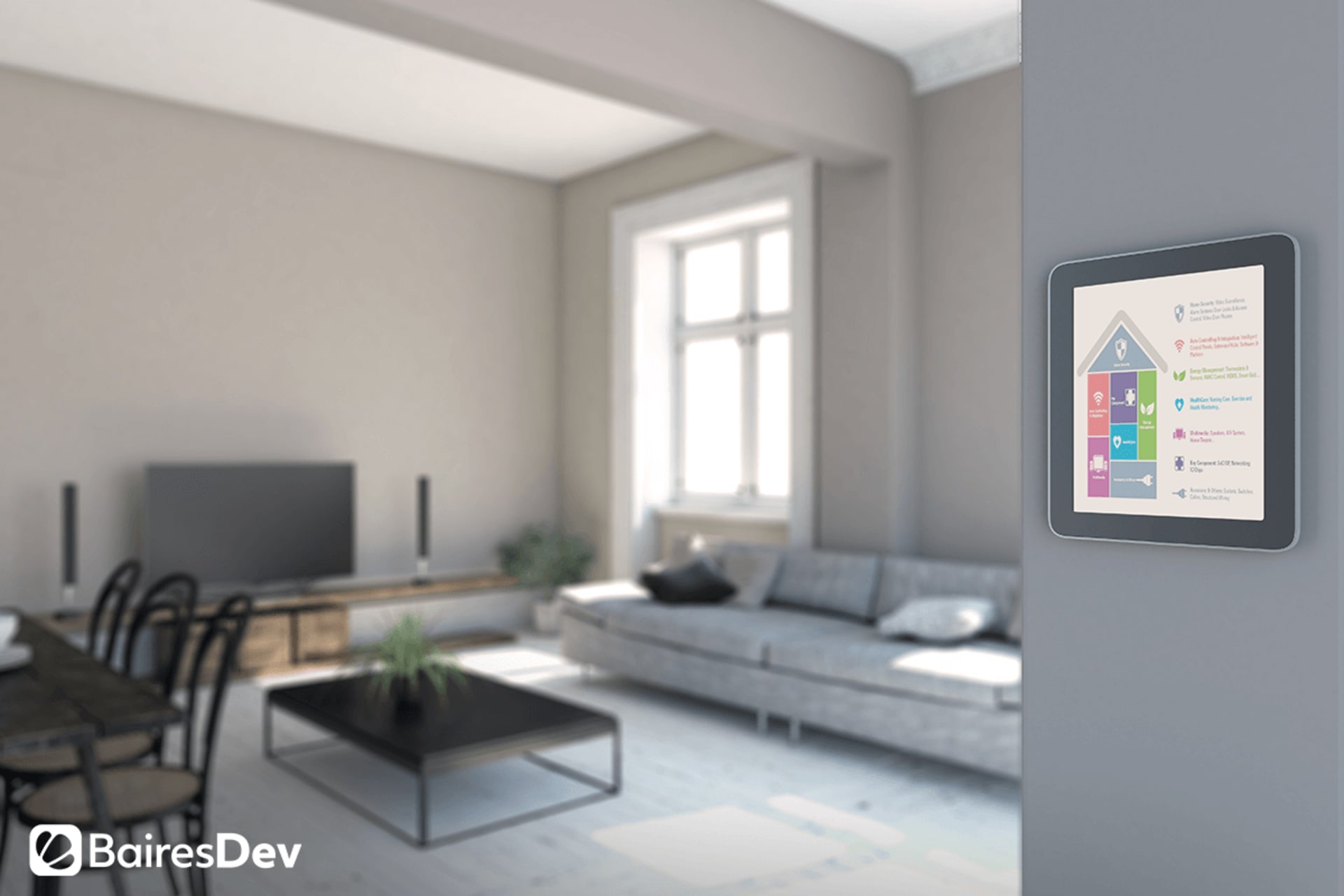IoT Development Company
Our IoT development services already power dozens of active engagements. We typically land our teams within 2 weeks, so you can start shipping top quality software, fast.
500+ companies rely on our top 1% tech talent.
IoT Development Services We Provide
Hardware Prototyping and Design
Physical devices are the foundation of an IoT ecosystem. From circuit design to firmware development, we build software that connects your devices seamlessly.
We leverage tools like Raspberry Pi and PlatformIO to ensure integration and functionality with rapid testing and iteration. We also use device management and connectivity technologies like WSO2, DeviceHive, and Node-RED.
IoT Dashboard Development
The Internet of Things generates massive amounts of data. You need intuitive and interactive user interfaces to monitor and control all connected devices.
Our developers build custom IoT dashboards using HTML, CSS, JavaScript, and more. We also employ frameworks like React and Angular to develop dynamic interfaces for overseeing device usage and analyzing performance metrics.
IoT Data Analytics
The IoT makes information readily accessible so you can process and derive actionable insights from your data.
We leverage real-time monitoring and predictive analytics tools to help you uncover valuable trends, patterns, and correlations. Examples include ThingSpeak for IoT analytics, ThingsBoard for data processing, and Tableau for data visualization.
Data Center Implementation
Your IoT data center is a central hub for connecting your devices. It’s the infrastructure to store, manage, and process the massive volumes of data that your IoT devices generate.
Using development frameworks like KAA IoT and Mainflux, we build scalable data centers to house and use your data.
Embedded Software Development
Every IoT ecosystem needs embedded software to operate and control the connected devices and ensure peak performance.
We leverage IoT software development tools like PlatformIO and Arduino IDE to power a wide range of devices, from sensors to complex industrial systems. We also optimize resource utilization—all while leaving room for adaptation and scaling as your needs evolve.
Mobile App Development for Connected Devices
Mobile applications interface with and enhance the functionality of your IoT devices. That’s because apps can provide users with intuitive control, real-time data visualization, and interactive experiences.
Using tools like Flutter and Firebase, our developers build user-friendly mobile applications designed to boost the connectivity of your IoT devices. This allows your team to easily interact with and manage IoT-enabled devices from practically any location.
QA & Testing
IoT quality assurance and testing is a meticulous process. It requires resources and time to assess and validate the reliability, security, and performance of your IoT solutions.
Our QA engineers employ rigorous testing methodologies to address vulnerabilities in your IoT systems, evaluate device functionality, validate cloud infrastructure, and safeguard your systems. We tap into tools like Postman for API testing, Appium for mobile app testing, OWASP ZAP for security testing, Apache JMeter for performance testing, and more.
Rolls Royce case study
Rolls Royce turned to BairesDev to develop an efficient, user-friendly mobile app. A two-week discovery process with the Rolls Royce product owner identified a comprehensive list of functionalities, data streams, and displays required to meet their clients’ expectations for a mobile SDS. Read the entire Rolls Royce case study.

Why Choose BairesDev for IoT Development

Robust Security Measures
Our IoT development process depends on the client, but there’s one common denominator: our commitment to safeguarding your data. Our developers, QA testers, and other specialists prioritize security protocols and industry best practices throughout the development lifecycle to protect your IoT solutions against threats and vulnerabilities.
Custom Solutions
From definition and design to development and testing, we provide comprehensive solutions—whether you need software outsourcing, a dedicated team, or staff augmentation. In all cases, we specialize in tailor-made IoT solutions. Our developers, testers, designers, and engineers are experts in key aspects of an interconnected IoT ecosystem.
Diverse Range of Talent
Our diverse tech talent represents the top 1%. We have over a decade of experience working across over 100 sectors. We always vet our tech talent according to their technical, logical, and soft-skill abilities. And they’re well-versed in the languages that are commonly used in IoT development—from C, Python, and C++ to Java and JavaScript.
The IoT Ecosystem We Used in Previous Work
Programming Languages
Core languages used for writing software that controls and collects data from IoT devices.
- Python
- JavaScript
- C
- C++
- Java
- Rust
- Lua
- MicroPython
IoT Platforms and Development Frameworks
Platforms and tools that provide integrated services to develop, deploy, and manage IoT applications and devices.
- AWS IoT
- Microsoft Azure IoT Suite
- Google Cloud IoT
- IBM Watson IoT
- Arduino IoT Cloud
- Node-RED
- IoTivity
- LwM2M
Operating Systems and RTOS
Specialized operating systems designed to run on IoT devices, often with real-time processing capabilities for immediate response to sensor data.
- Raspbian for Raspberry Pi
- Ubuntu Core
- Windows IoT Core
- Zephyr
- Mbed OS
- RIOT OS
- Contiki
- TinyOS
- FreeRTOS
Communication Protocols and Connectivity
Rules and standards that enable IoT devices to exchange data and communicate with each other and with the cloud.
- MQTT
- CoAP
- AMQP
- HTTP/HTTPS
- Thread
- Zigbee
- Z-Wave
- LoRaWAN
- Sigfox
- NB-IoT
Data Processing, Analytics, and Databases
Systems and software designed to store, process, and analyze large volumes of IoT-generated data in real-time or near-real-time.
- Apache Kafka
- Apache Hadoop
- TimescaleDB
- InfluxDB
- EsperTech
- Cisco Packet Tracer
- Microsoft IoT Central
Hardware Platforms
The physical boards and modules on which IoT applications are built, providing the necessary computational and connectivity capabilities.
- Arduino
- Raspberry Pi
- ESP32
- BeagleBone
- Adafruit Feather
- Particle Photon
Security and Device Management
Tools and protocols that ensure secure data transmission and provide the ability to manage, monitor, and update IoT devices remotely.
- OpenSSL
- Arm's Platform Security Architecture (PSA)
- Balena
- Particle
- Cisco Jasper
Middleware and APIs
The software layers that facilitate communication and data exchange between different components of an IoT system, including devices and applications.
- REST APIs
- RabbitMQ
- Apache Camel
- MuleSoft
Key Things to Know About IoT
Tailored Solutions for Every IoT Project
Frequently Asked Questions (FAQ)
What are the types of IoT software you can develop?
Some examples of our IoT software development services include:
- Firmware
- IoT Platforms and Applications
- Gateway Software
- Cloud Services
- Security Software
- Analytics and Control Tools
- Integration Middleware
What tools do you use to build an IoT solution?
We offer a wide range of custom IoT development services using tools like:
- Eclipse IoT
- Arduino
- Node-Red
- IBM Watson
- Device Hive
- Particle
What programming languages are commonly used in IoT software development?
Java, Python, JavaScript, C, PHPoC, Swift, Go, and Rust are the main languages used in IoT projects.
Can I retrofit existing equipment with IoT app capabilities?
Yes, you can retrofit existing equipment with IoT app capabilities. Our IoT app development solutions are designed to seamlessly fit into your existing ecosystem. Our experts consider compatibilities and communication requirements, as well as potential vulnerabilities and security protocols, to ensure a smooth user experience.
What is an IoT platform, and why are they necessary?
An IoT platform facilitates the development, deployment, and management of your Internet of Things data and devices. It connects your IoT appliances to the cloud so they can communicate with each other.
Instead of managing several software systems, an IoT platform is a centralized, autonomous solution that allows you to scale your IoT applications and boost efficiency.
How do you ensure the security of my IoT devices and data?
We secure your IoT devices and data in several ways:
- Encrypted data transmission between devices and servers
- Device authentication mechanisms to prevent unauthorized access
- The implementation of role-based access control (RBAC)
- Securely coded firmware
- Network infrastructure firewalls
- Intrusion prevention and detection systems
Regular security audits and strong data lifecycle management practices are also important for addressing vulnerabilities.
What are the critical considerations when evaluating an IoT software development company to partner with?
There are several factors you should keep in mind when choosing an IoT development provider, including expertise in IoT languages and tools, demonstrated experience, and a proven track record.
How do custom IoT solutions enhance automation and efficiency?
Custom IoT solutions, created by experienced IoT software development companies, significantly improve automation and efficiency. These solutions gather and analyze data in real-time, leading to smarter decision-making. They're effective in automating routine tasks, optimizing resource use, and enhancing overall operational efficiency.
IoT development projects involve devices that can remotely monitor and manage systems, which helps in reducing downtime and cutting maintenance costs. This network of interconnected devices offers valuable insights, fostering innovation, increasing productivity, and ultimately leading to more streamlined processes in numerous industries.
How Businesses Can Overcome the Software Development Shortage
BairesDev Ranked as one of the Fastest-Growing Companies in the US by Inc. 5000

See how we can help.Schedule a Call










